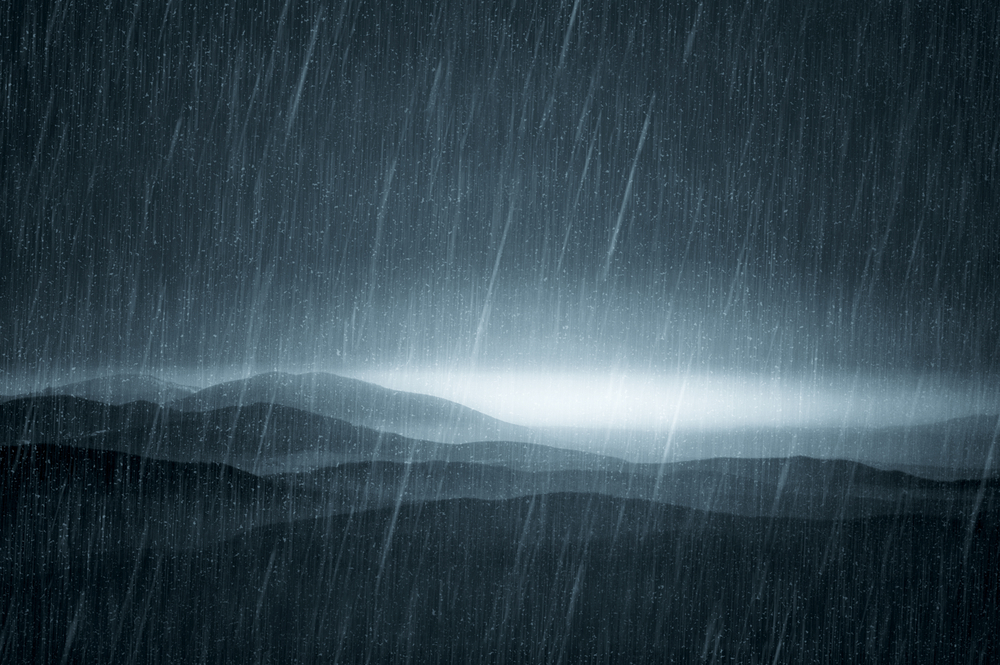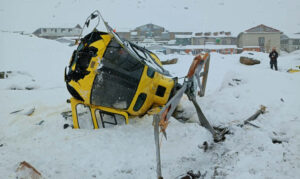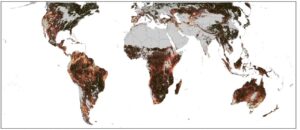The forty days and nights of rain during the Biblical flood does not compare to what happened in the late Triassic, over 234 million years ago. Earth was hot and humid, and the rain lasted two million years. An umbrella — and not just one ark but a fleet of them — would have been recommended.
The Triassic Period featured several major upheavals in the climate, landscape, and life on Earth. One of the least known is the Carnian Pluvial Event (CPE). Not surprisingly, the two million years of rain changed the planet forever.
Before the Great Rain
What was Earth like before this endlessly steady rain? At the time, the main landmass was Pangea. Essentially, it was a gargantuan, barren desert stretching from the North to the South Poles. Plant life was unimpressive, characterized by small desert plants dotted across the sands.
Rainy seasons were short and infrequent. Mountain ranges around the interior prevented rain from penetrating regularly. Only the coastlines had their share of water. Earth was 10°C warmer than today and seas were 47°C — much hotter than bath water.
Animal life consisted of very ancient forms of insects, reptiles, mammals, and the earliest dinosaurs. Reptiles ruled while small dinosaurs were the awkward new kids on the block. Conditions weren’t optimal for them. The Earth also had one main ocean called Panthalassa, in which there lived ammonoids, gastropods, sponges, corals, and other species.
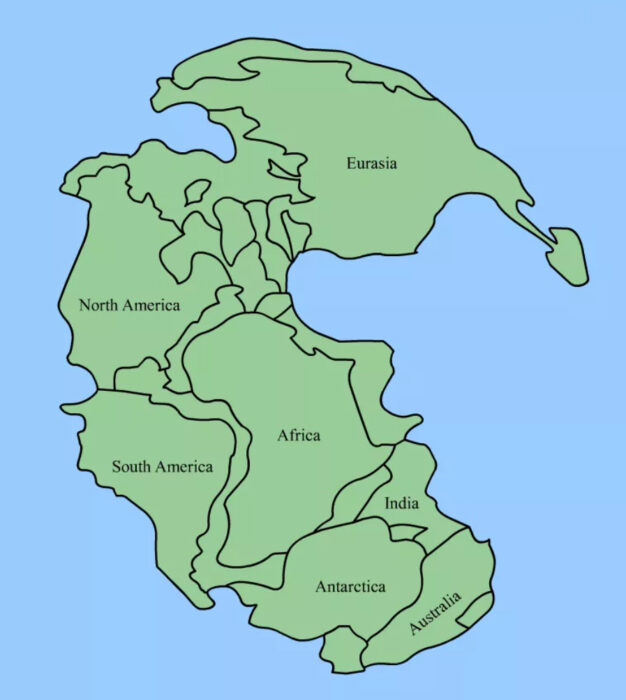
Pangea. Photo: Florida Museum
This all changed when what started as a few dark clouds and drops of rain soon turned into a two-million-year monsoon.
Strangely enough, this event has rarely been talked about until now, although evidence about it has circulated since the 1970s. When it comes to mass extinction events, scientists have always focused on the “big five”: Ordovician-Silurian, Devonian, Permian-Triassic, Triassic-Jurassic and End-Cretaceous. However, this one seems to have escaped their notice for quite some time.
Some researchers blame the event’s odd chronological position for its neglect. It did not happen at the beginning or end of a major geological era, like they often do. It seemed to have occurred at a very random time. Was it random, though?
Volcanism at work?
The main theory for this long period of rainfall is that a series of powerful volcanic eruptions around Alaska and British Columbia sent massive amounts of carbon dioxide into the atmosphere. This caused a long period of global warming and acidification of the oceans. It created great humidity, which inevitably led to extreme rainfall.
These volcanoes would have been powerful enough to change the water and carbon cycles, altering the climate forever. Many species died out as a result, including one-third of all marine animals. It’s important to note that the rains were in intervals, not in one continuous, neverending deluge.
“It’s like charging a massive battery,” explained geoscientist Jacopo Dal Corso, who has led research into the topic. “A ton of cooling high in the atmosphere and a ton of evaporation and heating near the surface…[is] going to cause an enormous storm.”
Some palaeontologists suggest that a new mountain range caused all this trouble due to pressure changes between land and the ocean. However, most scholars believe that the volcanism theory is more plausible.
Evidence
The Carnian Pluvial Event was only discovered in the 1970s. Geologists Schlager & Schollnberger were studying rocks in Austria’s Northern Limestone Alps when they noticed a peculiar and sudden layer of dark grey siliciclastic rock within the previously consistent carbonate rock record.
They dated it to 234 million years ago. This rock was not consistent with Pangea’s hot, dry climate. Rather, this type of rock typically showed up in very wet areas or those with an abundance of water.
Other deposits from this time started popping up all over the globe. In southwest England, geologists found it embedded in layers of red sandstone. It also turned up in Israel, Italy, and Utah, in the U.S.
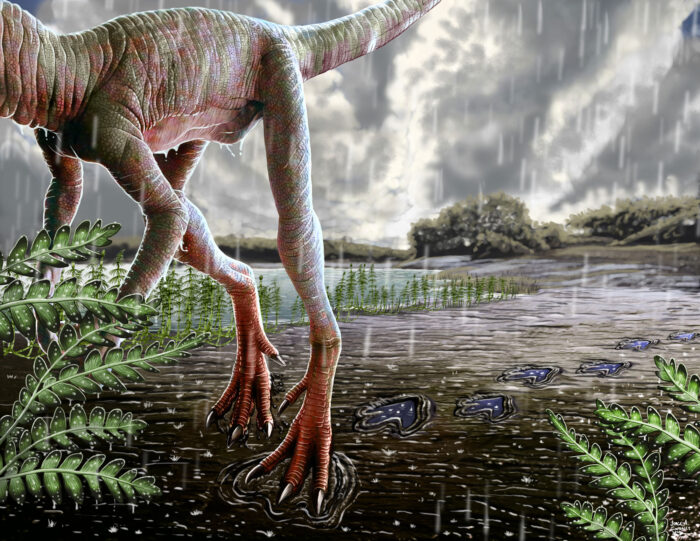
Illustration of a reptile during the CPE. Photo: JORGE GONZALEZ/NHMU
Other indicators of a deluge included the presence of amber, coal, ancient rivers and lakes with fossilized plant debris, and a white powdery clay called kaolinite. Additionally, fossilized pollen and spores found in rocks from the Carnian period also indicated a humid climate and hot temperatures.
Because of its recent discovery and the difficulty in finding data over the years, some geologists refer to the CPE as the “hidden extinction.”
After the rains…
Though climate change from human activity is considered undesirable nowadays, this ancient period of climate change did the world a lot of good. The planet saw a drastic acceleration of the major cycles, including the carbon and hydrological cycles.
Dinosaurs thrived, and the weather regulated itself more. Reptiles began to decrease as towering conifers and other large plants replaced their food supply (ground vegetation). Dinosaurs fared well with the larger plants. The ancestors of modern animals such as turtles and crocodiles emerged alongside them. The newly acidic seas led to the growth of plankton and coral reefs.
Did the rains stop? Yes, this period of rain and its subsequent flooding dissipated and global temperatures settled down into a less intense, cooler climate. Pangea became a desert again, but it was a different-looking landscape. The accelerated hydrological cycle caused rampant erosion and weathering. The soil from which plants grew changed radically from a carbonate base to much darker and more fertile sediment. The air shifted from its hot, dry state to a more humid one.
When the Late Triassic closed and the Jurassic period began, Pangea started breaking up and new oceans began to form. This created even more humidity, turning the climate subtropical. Deserts became tropical forests.
After the CPE, rain also regulated itself. It instead fell regularly at an average of 1-3 metres annually in more steady, seasonal intervals that did not last that long, especially not as long as two million years.
Essentially, this event was the beginning of our modern world, in the geological sense. The environment we have today, the climate, and our flora and fauna took hold after the CPE.
Conclusion
The climate continued to change after the CPE. More extinctions and reshaping of the environment occurred. The timing of the emergence of the dinosaurs and the CPE is no coincidence. This event was crucial for their domination in the Late Triassic. Scientists are happy to include yet another mass extinction in their line-up of Earth’s history. While this event is not as substantial and violent as the “big five,” it still played a pivotal role in birthing our modern world.
